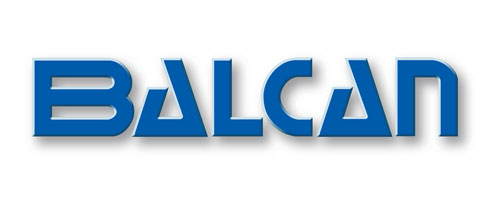The past decade has seen the widespread adoption of Light Emitting Diodes (LEDs) that not only illuminate our spaces, but also illuminate the path towards a greener future. LEDs have become increasingly prominent in homes, businesses, and public spaces worldwide. However, while LEDs afford a long lifespan in the region of 50,000 hours of light, like their traditional counterparts they will progressively degrade until the point they need replacing altogether.
Moreover, while LEDs offer numerous benefits compares to traditional lighting, including their longer lifespan, lower energy consumption, and better performance, recycling LED lamps isn’t nearly as straightforward. This is because LEDs are produced using a variety of different construction materials, including semiconductors and rare earth elements, which require specialised recycling processes.
Recognising the importance of responsible disposal and growing demand for LED recycling solutions, Balcan has developed the world’s first true LED processor, the LED1000. Designed from the ground up, the LED1000 creates positive high-value fractions (HVF) and has a rate of recycling over 90%, ensuring that the disposal of LEDs is efficient, eco-friendly, and economically beneficial for your business.
Why LED Recycling matters?
According to research, the penetration rate of LEDs into the global market has risen year-on-year since 2012 and is expected to reach a penetration of around 76% by 2025, rising to approx. 87% by 2030. As this figure continues to rise, so will the number of waste electronic LED lamps that are reaching the end of their lifecycle, generating significant demand for recyclers within the industry. In fact, research conducted by Material Focus, a UK-based not-for-profit organisation, found that around 29 million LED, solar, and decorative lights are ending up in landfill in the UK annually. However, sending LEDs off to waste sites is improper and damaging for the environment for two main reasons:
- Many LEDs contain potentially dangerous substances, such as lead, nickel and arsenic, that are damaging to humans, animals, and the environment.
- LEDs contain high-value fractions including aluminium and copper, that can easily be re-used to contribute to a circular economy. Disposing of these materials is wasteful as recycling aluminium uses only 5% of the energy required to extract raw aluminium from ore.
As a rapidly increasing volume of LEDs are reaching the end of their lifecycle, there is an ever-increasing demand for effective recycling processes that mitigate the environmental impact of waste LEDs and conserve their valuable materials.
Joining the LED Recycling Revolution
Recognising this growing demand, we here at Balcan have invested significantly in research and development to engineer a cutting-edge LED recycling machine, the LED1000, that is capable of handling the unique challenges posed by LED waste. Our technology uses advanced sorting mechanisms and extraction techniques to recover the valuable materials from discarded LED products. From semiconductors to rare earth elements, the LED1000 ensures that every component is extracted and recycled responsibly. By investing in an LED recycling solution, it’s a win-win solution that benefits both the planet and your business; millions of LEDs can be saved from being wrongly sent to waste sites, while you realise economic benefits from the recovery of high-value fractions such as aluminium.
Conclusion
The rise in LED technology marks a new era in lighting and recycling, but as with any innovation, it is imperative that we address the environmental impact of this transition. As we plan for a more sustainable future, it is a necessity to ensure that LEDs are correctly recycled. That’s why at Balcan, we’re proud to be at the forefront of the LED recycling revolution, providing technology for your business to invest in to support the planet going forward. For more information, head over to www.led-lamprecycling.com.

